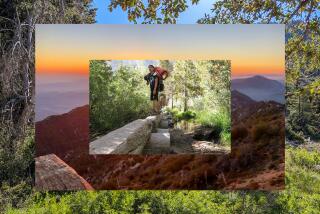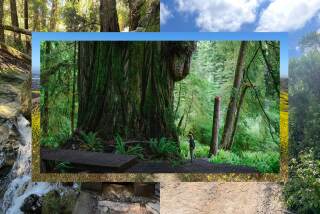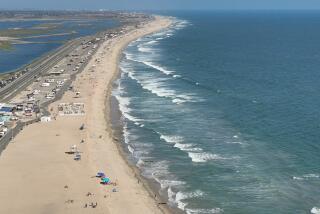Editorial: How to get Californians to visit their state parks
It’s a poorly run and out-of-touch parks system, indeed, that needs a commission to tell it to accept credit cards. Yet that’s among the major recommendations of the so-called Parks Forward task force, which aims to transform California’s state parks into buzzing hives of recreation.
Some of the recommendations are intended to make the parks more financially stable, by bringing in more visitors, by ensuring that parking fees — the main entry fee at most state parks — are actually paid and by encouraging more partnerships with nonprofit groups and municipal governments. Others aim to make the parks more accessible and attractive to the state’s young and increasingly urban population, by providing buses from transit hubs and focusing future acquisitions on urban green spaces such as the Los Angeles River. More festivals, soccer fields and guided activities; today’s Californians like their recreation structured.
Many of the recommendations are helpful, such as the push for more guided nature hikes, which are popular and help the public appreciate the importance of the state’s natural resources. Others should be carried out cautiously; soccer fields in appropriate spots might draw additional visitors, but nature parks shouldn’t be turned into ball fields.
Overall, the recommendations are less transformative than they might have been. They don’t overcome two of the biggest obstacles to park attendance: the relatively high price of visiting, and the often inadequate, outdated facilities. Coastal state parks often charge $15 a day to park a vehicle; inland, $10 is common. Los Angeles residents heading to the Santa Monica Mountains, for example, can choose from a range of options that include Topanga State Park, with its $10 parking, or the Santa Monica Mountains National Recreation Area, which is free.
Similarly, the commission wisely suggests that parks that offer camping should have low-cost cabins as well as tent sites. Tent camping can seem intimidating to people who have no experience with it, and the outlay for equipment might stop many people. But the bigger issue is that there aren’t enough well-maintained camping spots of any kind for peak seasons. And there’s no way around it: The parks need injections of state money to start reducing a huge list of deferred maintenance.
The task force has some smart ideas to raise revenue: partnerships with nonprofit groups and municipal governments that might help pay for operations, and additional concessions. (Rentals of tents and other camping equipment, along with help setting up a campsite, could be among those.) But any money raised that way should be targeted to improving the parks physically and making them more affordable. One investment in the future might be to offer a limited number of free-admission days, which would give people a reason to visit and become familiar with the state’s natural and historical treasures, making them more likely to revisit and support those places.
Follow the Opinion section on Twitter @latimesopinion and Facebook
More to Read
A cure for the common opinion
Get thought-provoking perspectives with our weekly newsletter.
You may occasionally receive promotional content from the Los Angeles Times.










